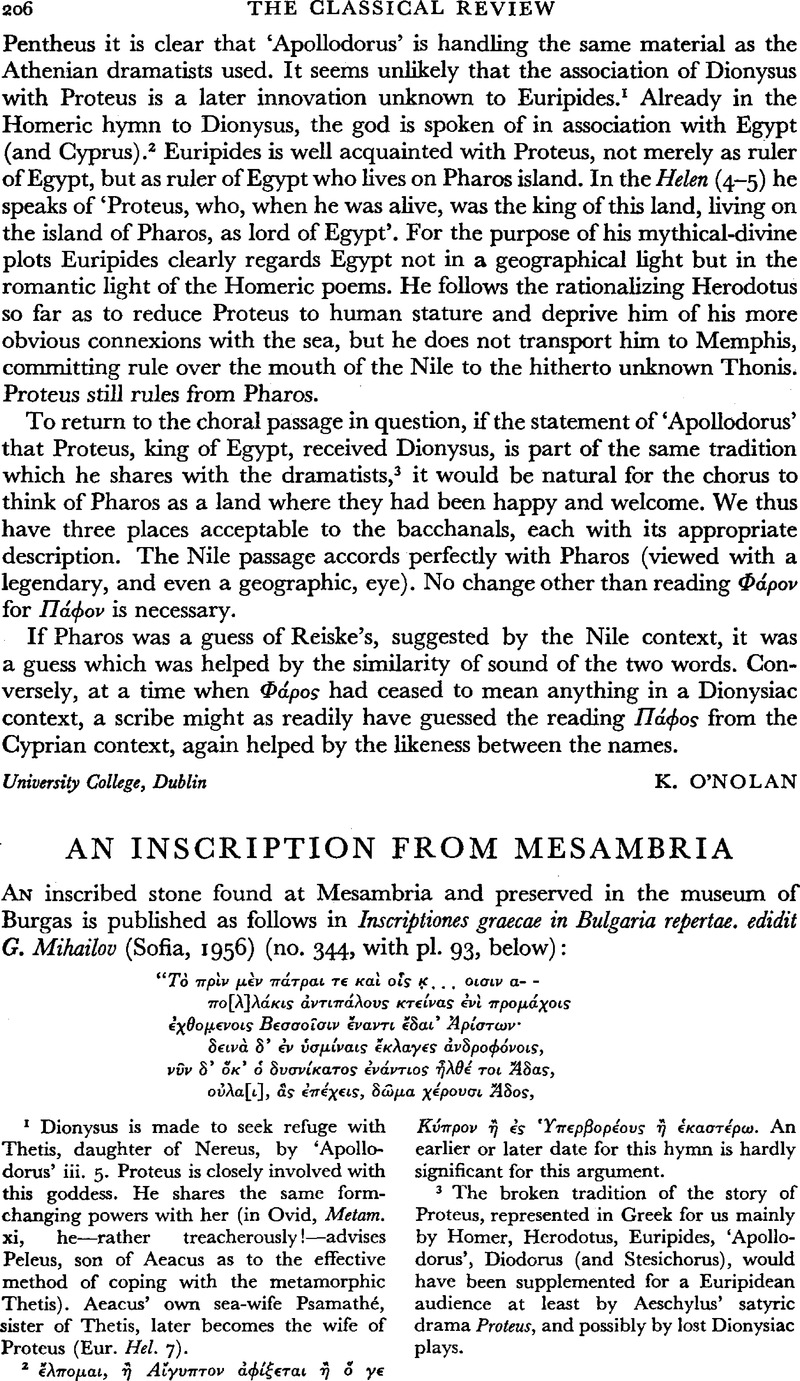No CrossRef data available.
Article contents
An Inscription From Mesambria
Published online by Cambridge University Press: 13 February 2009
Abstract

- Type
- Review Article
- Information
- Copyright
- Copyright © The Classical Association 1958
References
1 Dionysus is made to seek refuge with Thetis, daughter of Nereus, by ‘Apollodorus’ iii. 5. Proteus is closely involved with this goddess. He shares the same form changing powers with her (in Ovid, Metam. xi, he—rather treacherously!—advises Peleus, son of Aeacus as to the effective method of coping with the metamorphic Thetis). Aeacus' own sea-wife Psamathé, sister of Thetis, later becomes the wife of Proteus (Eur. Hel. 7).
2 ![]() . An earlier or later date for this hymn is hardly significant for this argument.
. An earlier or later date for this hymn is hardly significant for this argument.
3 The broken tradition of the story of Proteus, represented in Greek for us mainly by Homer, Herodotus, Euripides, ‘Apollodorus’, Diodorus (and Stesichorus), would have been supplemented for a Euripidean audience at least by Aeschylus’ satyric drama Proteus, and possibly by lost Dionysiac plays.




